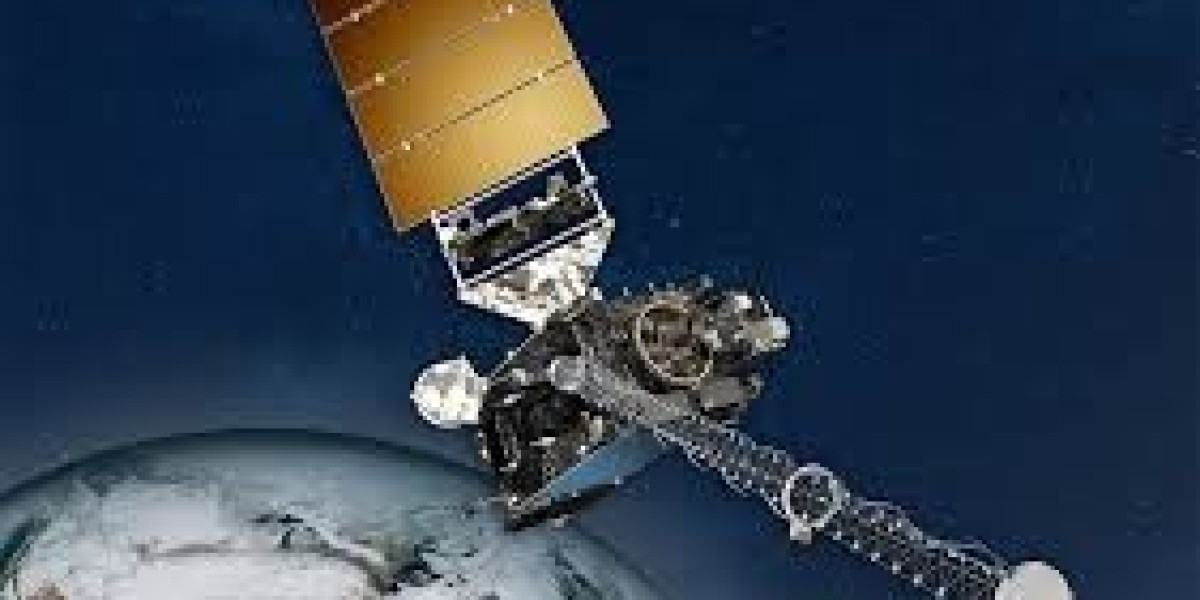Why Eyes in the Sky Matter More Than Ever
Lately, I’ve been thinking a lot about how much we rely on technology to understand the world around us. I’ve always appreciated nature and followed climate updates, but it wasn’t until I started reading more into environmental science that I realized just how crucial satellites are in this field. From tracking forest loss to measuring ocean temperatures, satellites have become one of the most important tools in environmental monitoring. And the best part? They’re helping us see things we’d never spot from the ground.
When I look at how environmental changes are affecting us globally, I can’t help but respect the scale and precision satellites offer. We’re talking about real-time data, global coverage, and the ability to observe long-term trends—all from orbit. It’s like having a full picture of Earth’s health every day, and it’s helping governments, researchers, and even regular people like me make better decisions.
The Problem: Traditional Monitoring Isn’t Enough
Before satellites, monitoring the environment relied heavily on ground reports, local weather stations, and limited field studies. While those methods are still valuable, they can’t cover the entire planet or give consistent data over time. I’ve learned that large-scale environmental challenges—like deforestation, glacier melting, and air pollution—are nearly impossible to monitor accurately without a global view.
The environment changes in subtle ways before major events happen, and without consistent monitoring, we often notice those changes too late. That’s where satellites step in. They give us a bird’s-eye view, not just once, but every day, sometimes multiple times a day. That level of oversight helps us track problems as they develop, not just after they become obvious.
The Agitation: We Need Better Data to Make Smarter Choices
When I started digging into this topic more, I found that many of the most pressing environmental issues—like rising sea levels or extreme weather patterns—depend on detailed, long-term observations. Satellites are making that possible. But it’s not just about collecting data—it’s about making sense of it and using it in ways that actually help.
I read about how scientists use satellite data to model future climate conditions, or how disaster response teams use it to plan evacuations before a storm hits. That kind of proactive action only works when we have real-time, accurate data. It reminded me of how I use tools in my own daily routines. Whether it’s checking the weather before going out or trying a new Mr Fog vape flavors option when I want to wind down, the idea is the same—make better choices with better information.
The Solution: How Satellites Monitor the Environment
What makes satellites so effective in environmental monitoring is their wide range of applications. They’re not just floating cameras—they’re equipped with sensors that detect heat, moisture, chemicals, and movement. Here are some of the main things they’re used for:
1. Tracking Deforestation and Land Use
Satellites detect changes in vegetation over time
Help monitor illegal logging and land clearing
Provide evidence for environmental policies and conservation efforts
When I see images comparing forest coverage from a decade ago to today, I can actually understand the scale of what’s happening. That kind of visual impact changes how you view your role in sustainability.
2. Monitoring Oceans and Water Quality
Satellites track sea surface temperature and currents
Measure ocean color to detect algae blooms or pollution
Observe melting ice and rising sea levels
This data is critical for understanding climate change and predicting how it will affect coastal cities. For me, it brings the science closer to home—especially when I see that rising ocean temps could impact global weather patterns in the near future.
3. Observing Air Pollution and Greenhouse Gases
Satellites detect emissions and pollutant levels in the atmosphere
Help monitor air quality in cities and industrial zones
Track wildfire smoke and volcanic eruptions in real time
Living in a city, air quality is something I check regularly. Knowing that satellites are helping monitor and manage that data makes me appreciate how much work goes into something I used to take for granted.
4. Supporting Disaster Response
Detect natural disasters like floods, earthquakes, and hurricanes
Provide rapid mapping for emergency response
Help track disaster recovery over time
I’ve seen satellite maps used during wildfires, where responders track the spread and decide where to send resources. It’s one of those things you don’t realize is happening in the background—but it makes a massive difference when every second counts.
Why This Matters to Me—and Maybe to You
What I like most about learning all this is how it connects big science to everyday life. Satellites aren’t just orbiting tools—they’re part of the system that keeps us informed and better prepared. It’s easy to feel disconnected from large-scale issues like climate change or resource loss, but the more I read, the more I understand how tools like this are helping. They’re shaping the future, and they’re doing it with precision and reliability.
And like any good system, it’s the little things that complete the picture. Sometimes after reading reports or following environmental news, I take a step back, relax, and reset. One of the ways I do that is with something I enjoy—maybe trying out one of the Mr Fog Switch Flavors while catching up on a new space documentary. It’s a simple part of my routine, but it makes the learning process feel a bit more balanced.
What the Future Looks Like with Better Monitoring
Satellite technology keeps evolving. We now have hundreds of Earth-observing satellites in orbit, and new missions are being launched regularly. These new satellites have more advanced sensors, faster data transmission, and the ability to work together as part of larger systems.
That’s exciting to me because it means we’re getting closer to a future where we can respond to environmental changes in real time. Imagine predicting wildfires before they start, mapping out drought risks before crops fail, or protecting endangered areas before the damage is done. That’s not science fiction—it’s already in progress, and satellites are leading the charge.
I’m also seeing more open access to satellite data, which is great for educators, small organizations, and even individuals who want to learn and contribute. It shows that environmental awareness isn’t just for scientists anymore—it’s something we can all take part in.
And speaking of taking part, sometimes the best way to reflect on what’s happening in the world is to slow down for a bit. I’ve found that sitting outside, maybe flipping through updates on space tech while enjoying one of the smoother Mr Fog Vape flavors, helps me think clearly about how all these systems connect. We’re not just observing the planet—we’re part of the story.
Satellites Are Changing How We See Our Planet
And That’s a Good Thing
As someone who’s become more curious about environmental science, I’m constantly amazed by how much we can learn just by watching from above. Satellites offer a view of Earth that’s both massive and detailed—helping us make smarter choices, react faster, and plan better.
This kind of technology helps us understand the present and prepare for the future. It makes me appreciate how far we’ve come—and how much potential we still have. Whether it's space tech or personal comforts, I’ve realized that real progress comes from paying attention to the details, asking better questions, and making small, smart choices.
And if those choices include learning something new while enjoying a familiar routine, like trying a different blend from the Mr Fog vape flavors I already trust, then that’s just part of staying balanced. Science and everyday life don’t have to be separate—they can inform and support each other, one thoughtful step at a time.








